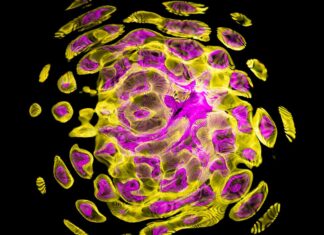Boston Dynamics: Pioneering the Future of Robotics
In the realm of cutting-edge robotics, one name that has consistently captured the world’s attention is Boston Dynamics. Established in 1992 as a spin-off from the Massachusetts Institute of Technology (MIT), Boston Dynamics has rapidly evolved into a trailblazer in the field of advanced robotics and automation. The company’s relentless pursuit of innovation has led to the creation of an array of remarkably agile and lifelike robots, each pushing the boundaries of what was once considered achievable in the realm of robotics.
From its inception, Boston Dynamics has been committed to developing robots that seamlessly integrate into various industries, demonstrating both practicality and unmatched technological sophistication. The company’s journey began with its first robot, Genghis, an agile four-legged machine that set the stage for what was to come. Over the years, Boston Dynamics introduced a series of groundbreaking robots, including the quadrupedal Cheetah, capable of remarkable speeds, and the bipedal humanoid Atlas, showcasing astonishing balance and mobility. These early successes laid the foundation for Boston Dynamics’ reputation as an industry pioneer.
However, it was the acquisition of Boston Dynamics by SoftBank in 2017 that truly catalyzed the company’s transition from a research-focused entity to a commercial powerhouse. This shift in ownership injected substantial resources into the company, enabling Boston Dynamics to accelerate its research and development efforts, refine existing prototypes, and bring its robots to market. This strategic pivot bore fruit in 2020 when Boston Dynamics unveiled the commercial version of Spot, a versatile quadrupedal robot capable of navigating complex environments and undertaking an array of tasks. Spot’s adaptable nature made it an attractive asset across industries, including construction, oil and gas, and even entertainment, as it found applications in various novel and unexpected domains.
One of Boston Dynamics’ most iconic creations, the humanoid robot Atlas, stands as a testament to the company’s exceptional engineering prowess. Atlas, with its human-like form and remarkable agility, exemplifies the strides made in robotic mobility and dexterity. Through years of iterative design and innovation, Boston Dynamics transformed Atlas from a robot that struggled to maintain balance into one that can perform backflips and navigate uneven terrains with astonishing grace. This progression underscored the company’s dedication to pushing the envelope of what robots can accomplish, spurring a new wave of possibilities for applications ranging from disaster response to warehouse automation.
In addition to its endeavors with legged robots, Boston Dynamics also set its sights on revolutionizing warehouse logistics. The company introduced Handle, a two-wheeled research robot designed to efficiently maneuver within confined spaces, lifting and moving boxes with unparalleled ease. Handle showcased the potential of robotics in optimizing material handling processes, presenting a glimpse into a future where robots seamlessly collaborate with human workers to enhance productivity and streamline operations.
Boston Dynamics’ innovations have not been limited to terrestrial domains alone. The company ventured into aquatic robotics with the development of the submersible robot called “Underwater Gripper,” further diversifying its portfolio. This robot, equipped with a specialized gripper, demonstrated the capability to navigate underwater environments, showcasing Boston Dynamics’ determination to explore new frontiers and tackle challenges across different terrains.
Beyond the technical marvels Boston Dynamics has created, the company’s robots have captured the public imagination through captivating demonstrations and videos that showcase their remarkable capabilities. These videos often depict robots performing intricate dances, parkour routines, and other feats that resonate with audiences around the globe. This unique blend of technological innovation and engaging storytelling has contributed to Boston Dynamics’ status as a household name in the world of robotics.
In 2021, Boston Dynamics marked another significant milestone as it transitioned from SoftBank to Hyundai Motor Group. This transition further solidified the company’s position in the robotics market and opened doors to even greater collaborations and synergies. With Hyundai’s resources and global reach, Boston Dynamics continues to push the boundaries of robotics, expanding its influence and contributing to a future where robots are integral to various aspects of human life.
In conclusion, Boston Dynamics stands as a paragon of innovation and ingenuity in the realm of robotics. From its humble beginnings as a spin-off from MIT to its current status as a subsidiary of Hyundai Motor Group, the company’s journey has been characterized by groundbreaking achievements and an unwavering commitment to advancing the field of robotics. Through a series of remarkable robots such as Spot, Atlas, and Handle, Boston Dynamics has redefined what robots can achieve, sparking new possibilities in industries as diverse as manufacturing, logistics, and entertainment. As the company continues to evolve and redefine the boundaries of technological innovation, the future undoubtedly holds even more awe-inspiring creations from the laboratories of Boston Dynamics.
Agile Legged Robotics:
Boston Dynamics is renowned for its development of legged robots that mimic the movement of animals. These robots, like Spot and Cheetah, exhibit exceptional agility, stability, and adaptability, allowing them to navigate complex and uneven terrains with ease.
Humanoid Advancements:
The humanoid robot Atlas is a flagship creation of Boston Dynamics. With its human-like form and advanced mobility, Atlas can perform a range of movements, from backflips to dynamic parkour routines, showcasing the company’s expertise in bipedal locomotion.
Versatile Applications:
Boston Dynamics’ robots find applications across various industries, from construction and agriculture to oil and gas. The versatility of robots like Spot enables them to perform tasks such as inspection, data collection, and remote operation in challenging environments.
Collaborative Robotics:
The development of robots like Handle demonstrates Boston Dynamics’ focus on collaborative robotics. Handle, a two-wheeled robot, combines mobility with lifting capabilities, making it a potential asset for warehouse logistics and material handling alongside human workers.
Advanced Sensing:
Boston Dynamics integrates cutting-edge sensors, cameras, and perception systems into its robots. These sensors enable the robots to navigate, sense their surroundings, and interact with objects in real time, making them capable of autonomous decision-making.
Real-time Control:
The company’s robots are equipped with sophisticated control systems that enable rapid adjustments to movements, ensuring stability and agility even in dynamically changing environments.
Human-Robot Interaction:
Boston Dynamics focuses on enhancing the interaction between humans and robots. This is exemplified by the intuitive control interfaces and communication tools integrated into their robots, promoting safer and more efficient collaboration.
Industry-Leading Research:
The company’s commitment to research is evident through its numerous publications and collaborations with leading academic institutions. Boston Dynamics consistently contributes to the advancement of robotics through scientific exploration and knowledge-sharing.
Engaging Demonstrations:
Boston Dynamics garners public attention through captivating videos that showcase the capabilities of its robots. These videos often depict robots performing complex tasks, dances, and stunts, effectively communicating the potential and excitement of robotics to a broad audience.
Ownership Transitions:
Boston Dynamics’ ownership transitions, from being a spin-off of MIT to being acquired by SoftBank and later by Hyundai Motor Group, have significantly influenced the company’s trajectory. Each transition brought new resources and opportunities, shaping the company’s evolution and expanding its global impact.
These key features collectively illustrate Boston Dynamics’ role as a pioneering force in the world of robotics, consistently pushing the boundaries of what is achievable in terms of mobility, autonomy, and human-robot interaction.
Boston Dynamics: A Story of Technological Evolution and Innovation
Boston Dynamics, a name that resonates with innovation and technological marvels, has embarked on a journey that encapsulates the spirit of human curiosity and the relentless pursuit of progress. Born as a spin-off from the Massachusetts Institute of Technology (MIT) in 1992, the company’s inception marked the beginning of a transformative era in robotics and automation. From its earliest days, Boston Dynamics has been on a mission to transcend the boundaries of traditional robotics, creating machines that challenge our understanding of what robots can achieve.
At its core, Boston Dynamics embodies the fusion of cutting-edge engineering, biomechanics, and artificial intelligence. The company’s founders, including Marc Raibert, instilled a culture of experimentation and exploration, leading to the creation of robots that blur the lines between science fiction and reality. The journey began modestly, with robots like Genghis and Cheetah, but these early endeavors laid the foundation for the groundbreaking innovations that would follow.
A pivotal moment in Boston Dynamics’ trajectory came with its acquisition by SoftBank in 2017. This partnership injected the company with a surge of resources, catapulting its research and development efforts to new heights. With SoftBank’s backing, Boston Dynamics was able to accelerate the refinement of its prototypes, undertake ambitious projects, and bring its creations closer to commercial reality. This shift marked a turning point, transforming the company’s focus from pure research to practical applications across a multitude of industries.
The impact of Boston Dynamics extends far beyond the realm of technology and engineering. The company’s robots have captured the imagination of the public, becoming cultural icons in their own right. The viral videos showcasing robots like Atlas and Spot performing intricate dances and feats of agility have garnered millions of views, sparking conversations about the role of robotics in our lives. These demonstrations not only highlight the capabilities of Boston Dynamics’ creations but also serve as a testament to the company’s ability to connect with a global audience.
It’s worth noting that Boston Dynamics’ journey has not been without its challenges. The pursuit of highly dynamic and agile robots presented numerous engineering hurdles. Balancing stability and mobility, replicating human movements, and ensuring reliable autonomous operation were complex puzzles that the company’s engineers and researchers had to solve. The iterative design process, marked by failures and breakthroughs, underscores the company’s commitment to pushing the boundaries of possibility.
Boston Dynamics’ foray into various industries underscores its commitment to making robots practical and accessible. The construction sector, for instance, benefits from robots like Spot that can navigate hazardous environments and perform inspections, enhancing safety and efficiency. Similarly, in agriculture, robots have the potential to automate tasks such as planting, monitoring, and harvesting, contributing to increased productivity and sustainability.
The transition of ownership from SoftBank to Hyundai Motor Group in 2021 further solidified Boston Dynamics’ standing in the robotics landscape. Hyundai’s global reach and resources provide a platform for Boston Dynamics to continue its trajectory of innovation. This partnership opens the door to collaborative endeavors that could redefine the role of robotics in sectors beyond manufacturing and automation.
As Boston Dynamics continues to evolve, it also addresses important questions surrounding ethics, regulations, and the societal implications of advanced robotics. The integration of robots into various aspects of human life necessitates thoughtful consideration of how they will interact with society, the workforce, and our daily routines. Boston Dynamics has demonstrated its commitment to responsible development, striving to create machines that augment human capabilities without compromising safety and ethical standards.
In conclusion, Boston Dynamics stands as a beacon of technological evolution and innovation. Its journey from a university spin-off to a globally recognized robotics powerhouse exemplifies the potential of human ingenuity and determination. The company’s robots have redefined what it means to interact with machines, challenging us to embrace a future where robotics and automation play an integral role in shaping industries, enhancing experiences, and expanding the boundaries of our capabilities. With each creation, Boston Dynamics propels us toward a future where science fiction becomes reality, reminding us that the pursuit of the unknown is an essential element of human progress.


















